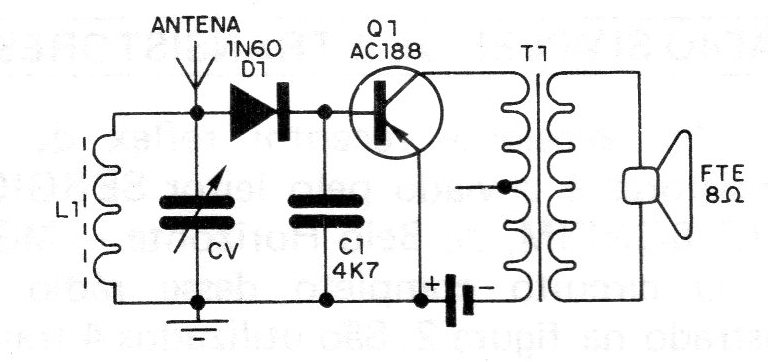This ultra-simple experimental receiver can be powered by a battery of water and salt. It was found in a 1982 publication. The diode D1 is germanium for general use, and the L1 coil consists of 100 turns of enameled wire 28 to 30 AWG, in a ferrite rod. The battery consists of a water and salt solution, the positive pole being a copper plate and the negative pole being a zinc or aluminum plate. The electrodes are 1.5 cm wide and long according to the container used. The solution is made in the proportion of 3 tablespoons of salt to 300 ml of water. The output transformer has a primary winding of at least 500 ohms and a secondary winding according to the speaker. In view of the low sensitivity of the circuit, a good external antenna should be used, as well as grounding. The experimental radio will also function normally when powered by a single common cell.




